Canon EOS 650 - The First EOS Camera
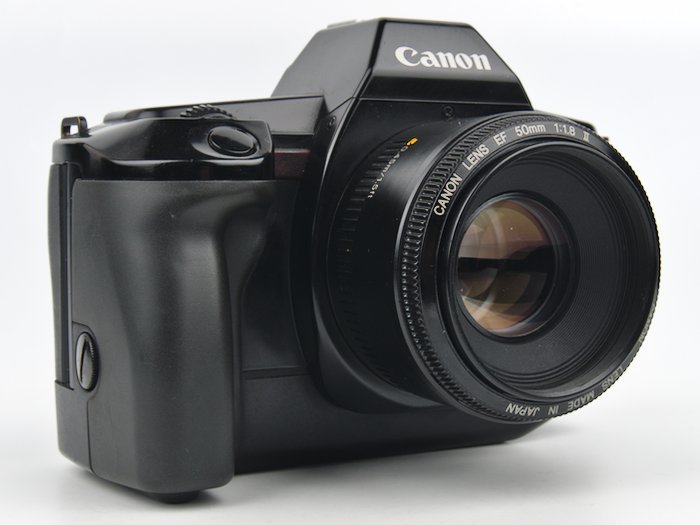
The Canon EOS 650 was the first camera released that used the Canon EF mount.
Canon sold the EOS 650 from 1987-1989, when it was replaced by the Canon EOS 600.
Price & Where to Buy
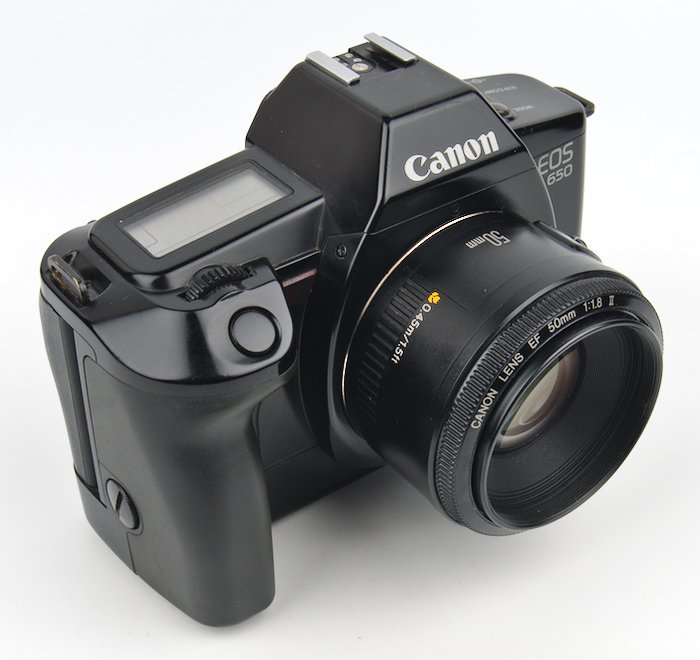
A Canon EOS 650 camera body can usually be found on eBay for low prices. If a lens or lenses are included with the body, you’ll have to pay more based on their value.
Also, keep in mind that you’ll need a 2CR5 battery in order to use the camera.
Prices will change over time, so check to see current prices. Also, keep in mind that you’ll need a 2CR5 battery in order to use the camera.
Affiliate Advertising Disclosure
Outside the Shot is a participant in the Amazon Services LLC Associates Program, an affiliate advertising program designed to provide a means for sites to earn advertising fees by advertising and linking to Amazon.com.
As an eBay Partner, I may be compensated if you make a purchase. I also participate in affiliate advertising programs with KEH and Adorama. More can be found on the Affiliate Discolsure page.
See current price and more information on:
Original Price
I pulled prices from the closest catalog/magazine I have to the release of the EOS 650. According to the Competitive Camera Corp Catalogue No. 33, 1998, the original price of the EOS 650 was:
Camera Body
$369.95
Camera w/ EF 50mm f/1.8 Lens
$439.95
According to the BLS Inflation Calculator, $369.95 in June 1988 would be equivalent to $804.98 in September 2019.
Battery - 2CR5
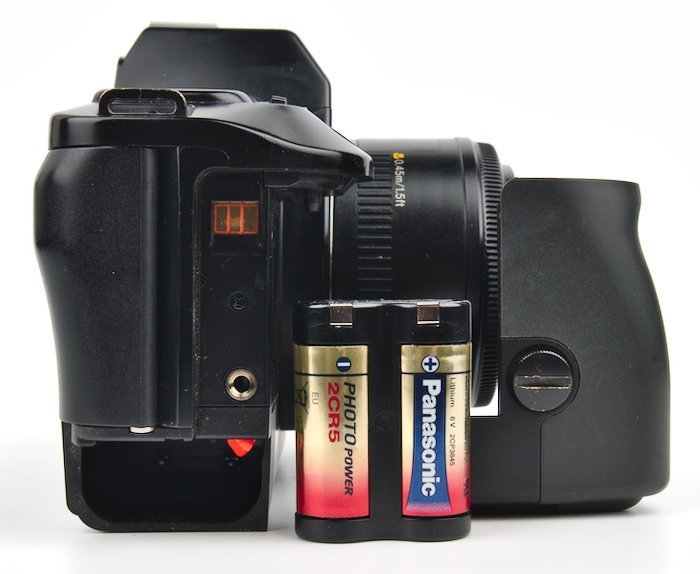
A single 2CR5 battery is needed to power the camera.
The battery bay is located behind the camera grip. In order to access the battery, the grip needs to be unscrewed.
The screw was designed to be loosened or tightened with a coin. I find that a nickel works best, but a quarter also works.
A dedicated battery check button is located under the switch cover on the back of the camera.
2CR5 batteries can be found in many stores as well as online. You should be able to find them for less than $10.
You’ll want to have a spare with you in case your battery dies. Knowing this, you can save a few bucks by buying a battery multi-pack online.
Quartz Date Back E
The Quartz Date Back E is powered by a button cell CR2025 battery. This is a battery that is commonly used in watches.
You should have no problem finding the battery in a big box store or online.
The battery is located inside the film door. You will have to take out a screw in order to access the battery.
When installing a new battery, the positive “+” side, should face the battery cover. You should be able to read the engraved text on the battery when you replace the cover.
Build Quality
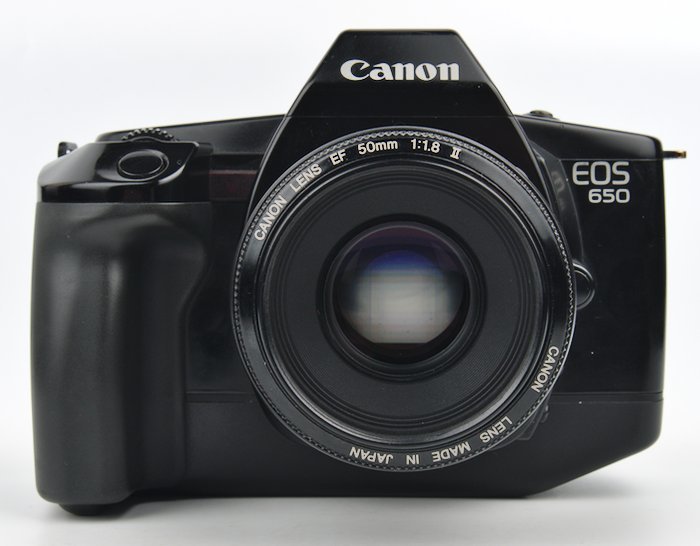
Lots of plastic. The lens mount is made of metal, unlike some of the entry-level models that followed the EOS 650.
I like how the grip feels and find it more comfortable to hold than the Canon EOS Rebel G.
Personally, I find some of the buttons to be a bit difficult to access. Particularity the AE lock for partial metering and the manual aperture set button.
The camera weighs 672 grams (23.7 ounces) without a battery or lens cap, but + the quartz date back. As the lineup of EOS cameras progressed, comparable models get much lighter.
For instance, the Rebel G weighs 366g (12.9 ounces). The build quality of the 650 is better. However, the difference in quality is not worth having more weight with fewer features.
EOS 650 vs EOS 620
The Canon EOS 620 was released along with the 650. It was a slightly higher-end model with more features.
Features the 620 has in addition to everything included in the 650:
- Auto Bracketing
- Multiple Exposures
- Maximum Shutter Speed of 1/4000
- Maximum Flash Sync Speed of 1/250
Lens Mount - Canon EF
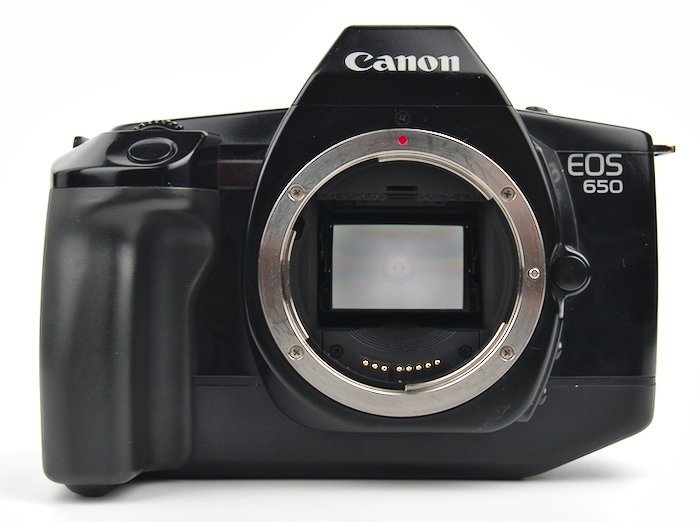
You can use any Canon EF lens with the camera. These are full frames lenses that you can also use on Canon DSLRs.
There is a huge selection of lenses that can be used with the EOS 650. In addition to all of the Canon lenses, there is widespread third party support for the lens mount.
In addition to the recommendations below, you should be able to find used lenses in good condition everywhere camera gear is sold. That includes online and stores.
Canon EF-S Lenses
EF-S lenses can not be mounted on the camera. They are designed for APS-C digital cameras. They will not produce an image circle large enough to cover a 35mm film frame.
You can tell the difference between EF and EF-S lenses, by the dot that indicates where to mount the lens onto the camera. Canon EF lenses have a red dot, while EF-S lenses have a white square.
Recommended Lenses

These lenses are recommended based on the image quality they provide for the price. It does not make sense to recommend L series lenses.
Everything in the list below should be able to be found for less than $100 used.
The 50mm and 28mm primes are going to have the best image quality. They are also the best choices for low light, such as indoors, shade, or dusk.
Depending on how picky you are, the zooms will all have image quality issues. However, they are an affordable way to get longer focal lengths.
- Canon EF 50mm f/1.8 (Amazon)
- Canon EF 28mm f/2.8 (Amazon)
- Canon EF 35-80mm f/4-5.6 (Amazon)
- Canon EF 80-200mm f/4.5-5.6 (Amazon)
- Canon EF 100-200mm f/4.5 (eBay)
Shutter Speed + AE Modes

The camera has an electronically controlled vertical focal plane shutter. Shutter speeds range from 30 seconds to 1/2000 of a second in half-stop increments, with a bulb mode.
Maximum flash sync speed is 1/125 of a second. There is a standard hot shoe above the viewfinder.
In addition to manual control, the camera has the following automatic exposure modes:
- Full Auto
- Manual
- Program AE
- Shutter Priority
- Aperture Priority
- Depth of Field
Setting ISO
When a film canister with DX coding is loaded into the camera, the ISO will automatically be set. ISO 25-5000 is supported for DX-coded film.
The ISO for film can be manually set from 6-6400. This is useful for bulk loaded rolls, either done yourself, or purchased.
Setting the ISO is done by pressing both the yellow and blue buttons, under the switch cover, at the same time. Then turn the input dial until the display shows the ISO you want.
35mm Film to Use
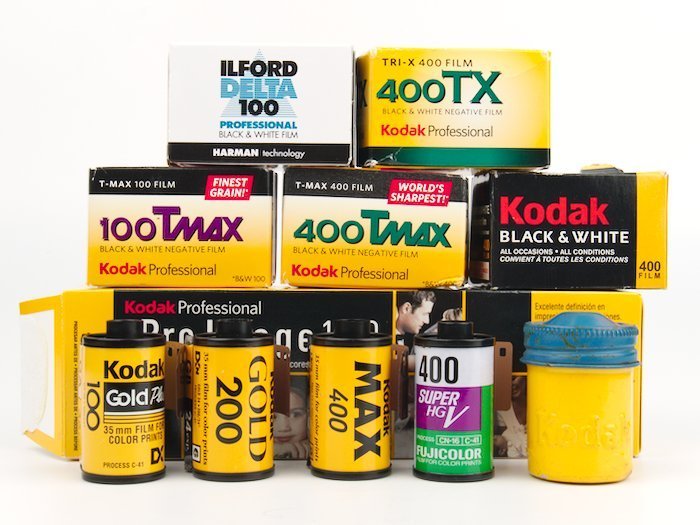
The Canon EOS 650 uses rolls of 35mm film. A variety of black and white, as well as color film are widely available.
Depending on where you are, you should still be able to find rolls of film available at pharmacies, grocery stores, and big box stores.
If you’re unsure of what ISO to use, my recommendation is to use ISO 400 film. With that speed of film, you’ll be able to take photos indoors, in shade, and in sunlight.
Slower films, such as ISO 100 or ISO 200 film will require a flash to take pictures indoors. They will work well in direct sunlight.
| Color | Black & White |
|---|---|
| Kodak UltraMax 400 | Ilford HP5 Plus 400 |
| Lomography Color 400 | Kodak Tri-X 400 |
| Kodak Portra 400 |
Viewfinder
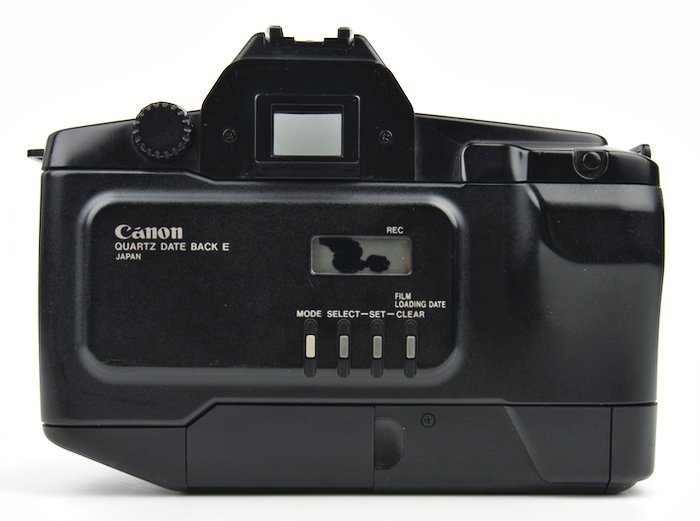
The viewfinder on the EOS 650 is large and bright. Shutter speed and aperture are displayed in a green LCD at the bottom of the viewfinder.
There is a center autofocus point with a circle around it. The circle shows where the reading will be taken when spot metering is used.
Slip on rubber eyecups are used. My camera is missing the eyecup. That’s not a surprise and they do not stay on as well as ones that screw in.
Autofocus
There is only one center autofocus point. You can switch between single shot AF and continuous AF.
Canon’s first SLR with autofocus was the T80, which used the FD lens mount.
The Canon EOS 650 is the first autofocus SLR released that uses the EF mount.
Being one of the first, the autofocus is not good when compared to later models. In low light, the camera will hunt and often miss focus.
Metering
There are two different metering modes in the camera.
Evaluative metering is the default metering. Light is taken from six different zones with center-weighting.
Partial metering - Takes a light reading from the center 6.5% of the viewfinder. The area is indicated by the circle in the center of the viewfinder.
Partial metering requires you to hold the shutter button halfway down, while also pressing the AE lock button. I find the process to be awkward due to the location of the AE lock button.
Exposure Compensation is also available. It can be set plus or minus five stops in half-stop increments.
Accessories
There are a huge amount of accessories available for the EOS system and EF lens mount. The camera accessories listed below are a select few that were pulled from the manual.
Speedlites 420EZ/300EZ
Both the 420EZ and 300EZ are listed in the camera manual as flashes to be used with the EOS 650.
While they will work with the camera, keep in mind that newer Speedlites and third party flashes can also be used. Newer flashes will have faster recycle times, and possibly more features.
GR10 Large Grip
Screws in where the original grip goes. Extends the grip down past the bottom of the camera. Good for people with large hands, if you can find one.
Interchangeable Focusing Screens
There are 7 different focusing screens that can be used in the EOS 650. They are going to be difficult to find.
- A. Microprism
- B. New Split
- C. Overall New Laser matte/AF Frame (Comes with 650)
- D. Laser Matte/Section
- E. Laser Matte/Scale
- I. Laser Matte Double Cross-hair Reticle
- L. Cross Split-image
Camera Manual
A PDF scan of the manual can be found on Butkus.org.
Alternative Cameras
Canon EOS Rebel T2 (300X), Rebel Ti (300V)
- Canon Rebel T2 (300X in Europe) was released in 2004.
- Canon Rebel Ti (300V in Europe) was released in 2002.
These two cameras represent the last two consumer-level SLRs released by Canon.
They have decent build qualities. What’s good is they are packed full of features and have far better autofocus than the EOS 650.
Canon Elan 7 (EOS 33 in Europe)
The Elan 7 (EOS 33) was Canon’s last mid-level camera. A later revision was made with the updated names being the Elan 7N and EOS 33V.
There was another version with eye controlled autofocus point selection, the Elan 7N/EOS 33V. This feature did not work well and you should avoid this version of the camera.
What you get with the Elan 7 is what you’d expect from a mid-level camera. It has a better build quality, more features, more AF points, better AF system, more controls, etc.
You’ll have to pay more for an Elan 7 than a Rebel T2 or Canon EOS 650. If you’ve already been shooting 35mm film and want to upgrade your EOS camera, this would be a great choice.